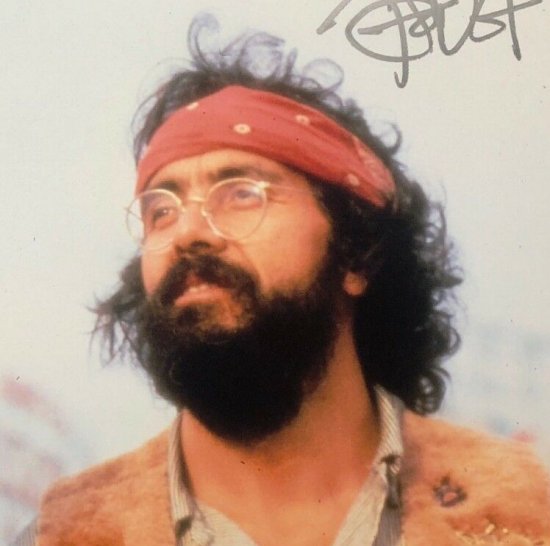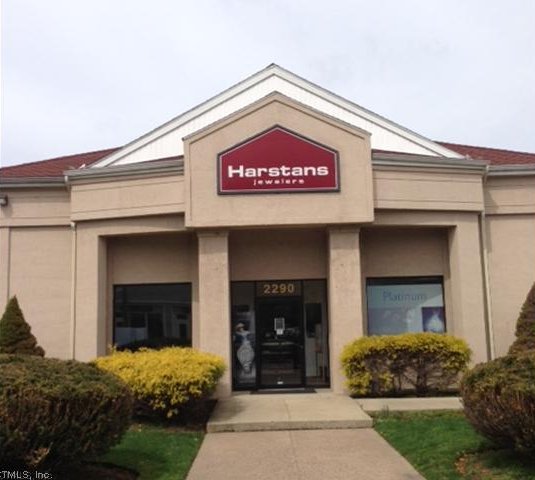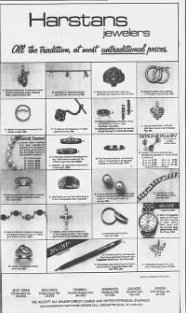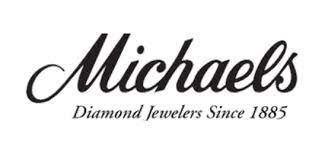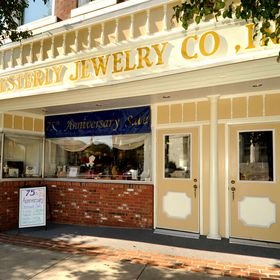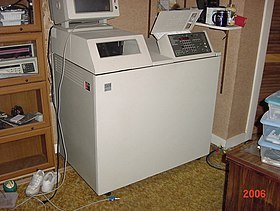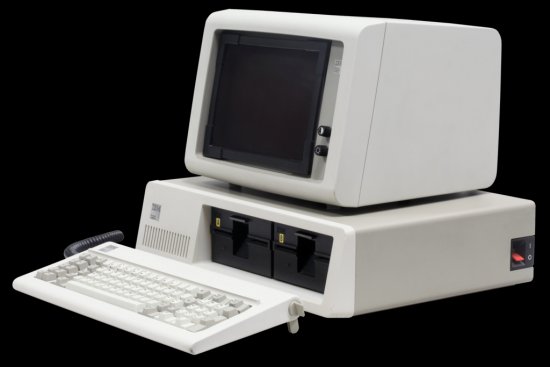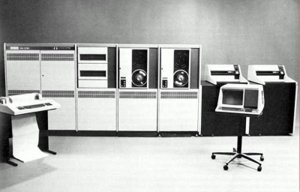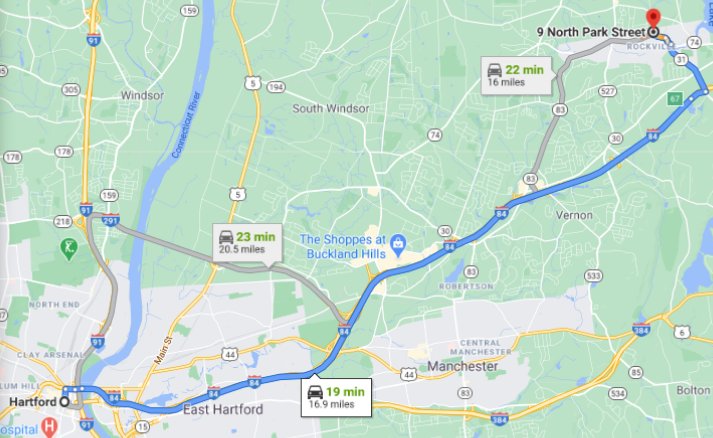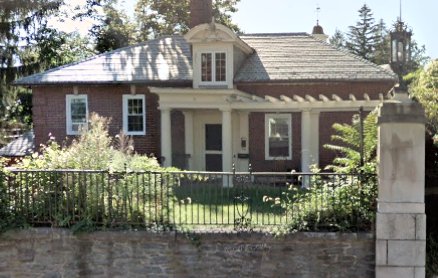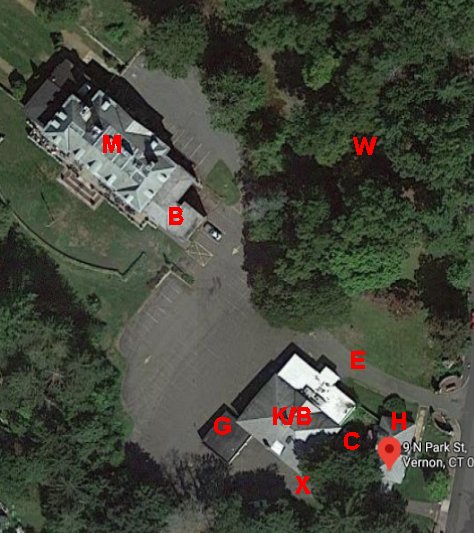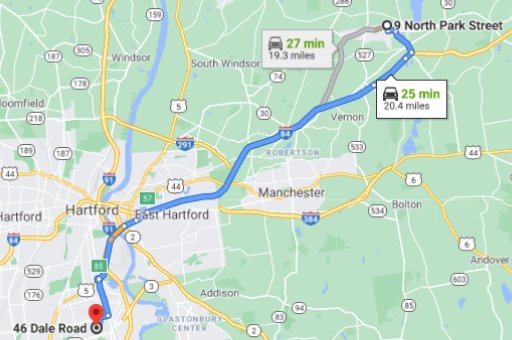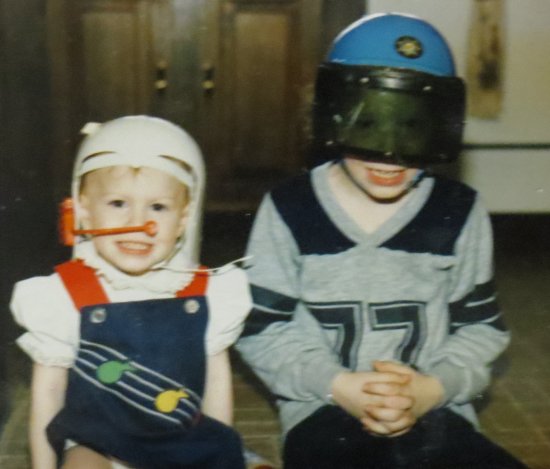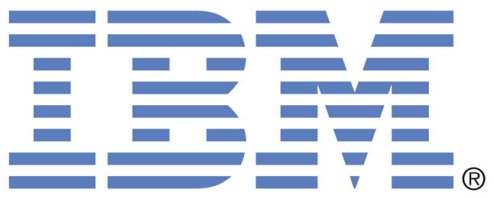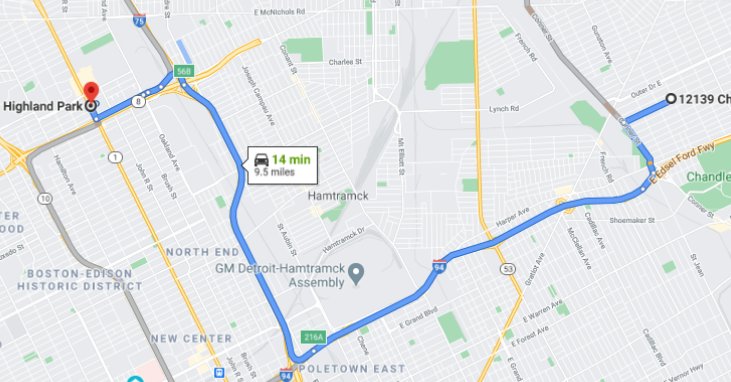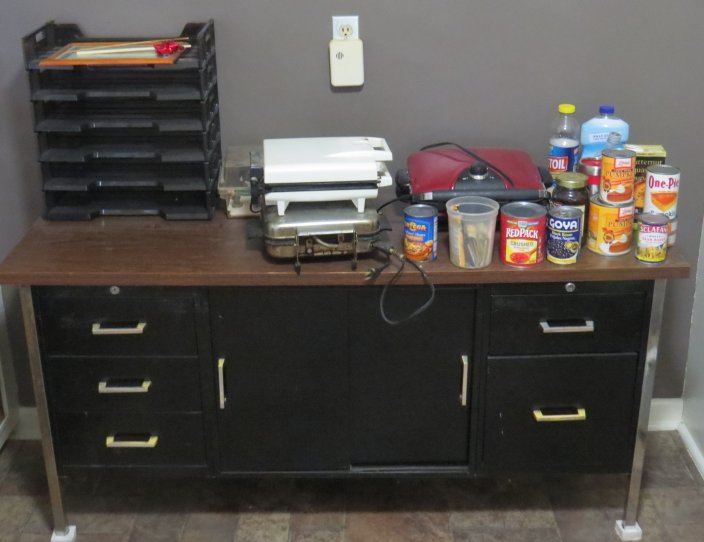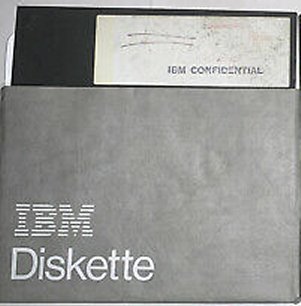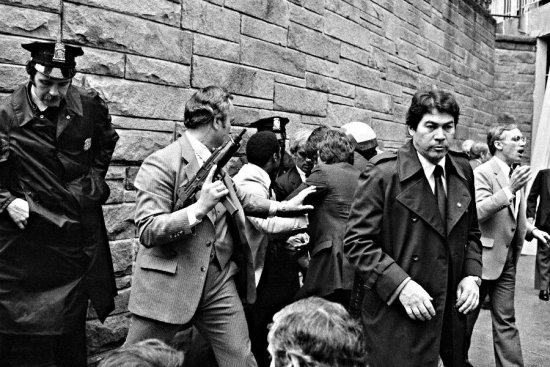Who made the hoofbeats with coconuts? Continue reading
Systems that were designed and implemented to the specifications of each client were both fun and challenging. They were not, however, very profitable. From the beginning I was always on the lookout for a way to market one system to a dozen or more clients. It had to be a business that was unique but also substantial. Another limitation was geographic. In the early eighties there was no good way to support systems remotely. We therefore needed to concentrate on companies that were within relatively easy driving distance.
I realized the importance of finding such an industry in which to concentrate our efforts almost immediately. The search for this Holy Grail led us down several paths that turned out to be dead ends for various reasons.
When we first moved back to Connecticut we had not yet developed any significant software aimed at businesses. Sue had expertise working with the construction industry and IBM’s payroll package for those companies. Unfortunately, we did not have access to a list of IBM’s installations of this product.
I spent some time putting together a card file of construction companies in New England. I think that my source was the Yellow Pages in the Hartford Public Library. We may have even done a mailing to them. I am not sure that we had stationery and envelopes yet. In early 1981 the first class postage rate was only fifteen cents. So, we could have mailed to one hundred companies for $15. That was within our marketing budget.
At any rate, nothing came of this effort. For several years Sue continued to do work for those clients, but we got no new ones in any aspect of the construction field.
As soon as I had completed work on the software for Diamond Showcase (described here), I undertook research to find out how many small chains of jewelry stores there were in New England. I located very few indeed. Undaunted, I composed a letter that boasted of our success at Diamond Showcase. I only got one response.
Before my first interview with the president of Harstans Jewelers, Frank Sikorski1, and his wife (whose name and title I don’t remember), IBM had already announced the Datamaster. So, I had to persuade them to have faith not only in my ability to produce a system for them but also my recommendation that they buy a computer system that was just hitting the market. They also had to let us take delivery on the system. At the time I still looked like Tommy Chong (minus the headband and the ever-present joint), and my wardrobe was that of an impoverished grad student. Nevertheless, they agreed to our proposal.
Harstans was a family business, but there was no one with the surname of Harstans. Rather, it was a combination of the first names of Stanley Sikorski, Frank’s brother, and Harriet, Stanley’s wife. Stanley, I learned, operated a wholesale jewelry business in New York City that was the source of all of Harstans’ diamonds. Frank was the president; I am not sure what Harriet’s title was, but she was in charge of payroll and paying the bills. They used IBM’s payroll system for the former, but they did not like it. Eventually we installed the payroll system that we had written with some minor modifications.
The company’s offices were on the second floor above the West Haven store. There were four other Harstans stores at the time. Eventually they even opened one in the Enfield mall. I was never actually on the sales floors of any of these locations. I parked in a lot behind the West Haven store, entered through the back door, and took the stairs to the second floor.
Harstans insisted that we make one major enhancement. When a batch of new items had been entered, they wanted the system to print small tags for each one. The tags contained both the retail price of the item and the price that Harstans paid—in code. The code was BUICKSEDAN. B was 1, U was 2, etc. If they paid $523 for an item, the tag said KUI.
No customer paid the retail price on the tag either. The store had the peculiar policy of running a permanent half-off sale. So, if the tag said $350 the real price was $175. Competitors tried to force them to abandon this tactic, but for as long as we were associated with them, it persisted.
I visited Harstans many times over the years. Here are some of my most vivid memories.
- Harstans had many customers from New York. The store, which was near I-95 and Route 1, did not charge these people sales tax, which was required for on-site retail sales. Harstans allowed these people to take the goods they bought home with them, but they also mailed them an empty box to prove that no exchange of money for goods had taken place on the site.
- I locked my keys in my Celica once. I had to borrow a coat hanger to get in.
- Harriet told Sue that she and her daughter had been at their house in Branford when some men broke in and tied them up. Some items were stolen, but no one was injured. The incident induced Harriet to buy a pistol and take shooting lessons. She always carried it in her purse after that.
- I was working in the office in December when the store manager brought up a stack of bills from downstairs that was as thick as his fist. He wanted to count them in private. The first eight or ten were $100 bills. I stopped watching after that.
- Frank asked me to give a speech at the Lions Club of West Haven. I told the attendees how much I liked my job. A few people asked me about horrible situations that they had had with their computers. In every case they had sent a boy to do a man’s job. Their computers were not designed for business applications.
- Frank asked me to do something once that was almost certainly unethical. It involved writing a program that produced one page of printed output that looked vaguely like a computer-generated report—not one from our system—but actually contained fabricated numbers that he supplied.
- The store, of course, had burglary alarms. I was occasionally the last person still working in the office. Usually people were still working in the selling area. However, on once occasion the last person downstairs had left without checking the office. When I opened the door to exit all of the alarms went off. I just strolled to my car and drove home No one ever mentioned it.
We also installed an accounts payable system at Frank’s insistence. I had already noticed Harriet’s approach to accounts payable. Her lower right desk drawer was devoted to invoices from vendors. Sometimes she took the invoices out of the envelopes, but just as often she threw the envelopes in unopened. This infuriated Frank, but there was not much that he could do about it. He was the president and she was an employee, but she was also an owner, and he was not. He was counting on the A/P system to solve the problem.
Vendors called complaining about unpaid bills pretty often. I once heard her tell one of them that she would cut a check to them that day. She also begged them not to tell her boss about it because he would probably fire her, and she really needed the job. She got a tear in her voice while she said that. She also usually asked the vendors how much she owed them instead of looking through the invoice drawer.
To set up the accounts payable system we had to go through the stack of envelopes and invoices one at a time. We had to take Harriet’s word that some of them had already been paid. It was a humiliating experience for her, and she probably hated both Frank and me for it. When we were finally done, A/P was turned over to the lady (I can’t remember her name) who ran the inventory system.
I had an interesting meeting with the proprietor of Michaels Jewelers, a chain of stores based in New Haven. I don’t remember his name. He lost interest in our system when I told him that there was no way for two Datamasters to communicate remotely. This was becoming a bigger drawback to the design of the hardware every year.
He told me that his biggest problem was inventory “lost” at his branch stores. He said that he really didn’t care that much if he sold the jewelry. It could just be melted down and resold as something that was more popular at the moment. Is there anything else that one could say that about?
Another great thing about the jewelry business is that you can depreciate the inventory for tax purposes, but in fact the value of the goods is more likely to increase rather than decrease for reasons that I have never understood. After all, they are just shiny rocks of little utility.
Unfortunately, there was not much that we could offer in the way of loss prevention, especially if the problem is focused on employees. Really good solutions to that problem were not available until at least a decade later.
One other thing that I remember is that the proprietor of Michaels called the people at Seiko “whores”. I think that he meant that they did not care who sold their watches.
I also pitched Westerly Jewelry Co. in Westerly, RI. An IBM rep from Providence drove to Westerly and brought a Datamaster with him so that I could do a demo for Larry Hirsch, the owner. The reception to my presentation was not great. I tried to follow up, but there was not much interest. If they had owned two or three stores, we might have had a better chance. Managing one store without a computer is much easier than managing several.
What I remember most about the experience is that the IBM rep wore a yellow shirt. I had never seen any male IBM employee in anything except a white shirt. This was, of course before IBM did a 180-degree turn on its expectations about the attire of its employees.
Harstans used their Datamasters for many years. They hired a young man named Jim Coer to oversee the systems. We had a pretty good relationship with him, but they eventually decided to buy a System/36 at a cost that dwarfed what they had spent on Datamasters. They must have also bought a competing software system that they expected to do things that we could not provide. I suspect that whoever sold them on this idea also said that no one used BASIC on the System/36 because the performance was bad. The first part of that statement was pretty much true, but the performance of well-written BASIC programs was, we later determined, roughly equivalent to that of RPG, the simplistic column-oriented language used by most S/36 programmers.
We parted with Harstans on amicable terms, but the loss of our main reference account ended the hope of concentrating on jewelry stores.
TSI’s installation at Avon Old Farms School was, by all measures, an unqualified success. It is described here. The Datamaster was perfect for their requirements, and all of the modules were successfully completed in a relatively short time.
Even before we met with them, I suspected that this installation might be the first step into a lucrative market. When I learned that Walter Ullram’s younger brother held a similar position at Westminster School in Simsbury, I grew even more optimistic. However, at the meeting that Walter set up for me with him the younger Ullram seemed only mildly interested. I followed up with a letter, but I heard nothing back.
I discovered that there was a book listing all of the private schools. It might have been restricted to New England. At any rate I mailed to the business managers of all of them and never heard anything in reply. By that time we had our hands full with other clients.
We had designed a report that provided Paul Prior of Ledgecrest Convalescent Hospital with the information that he needed to maximize his reimbursements from the state. The installation is described here. When it was completed, I decided to try to market it to the other nursing homes in Connecticut. By limiting it to Connecticut, I would only have one set of regulations to deal with.
By the mid-eighties it was becoming difficult to sell Datamaster systems. PC’s were so much cheaper. It was hard to explain why they were inferior. In response to this a developer named Gary Hoff2in Minnesota had created a PC program called Workstation Basic3 that ran programs written for the Datamaster without any conversion. TSI bought a copy and converted our report program to run in WB. I also designed add-ons so that people without the TSI G/L system could enter the appropriate numbers and the month they represented. The program would tell them how they were doing towards staying under the state’s predetermined caps.
A woman who worked for a company that sold personal computers helped me to market this product. I sent letters to all operators of nursing homes in the state. Quite a few responded, and I did a few demos and talked with a few owners. She offered them discounts on the computers. No one was ready to buy. One of them finally told me, “Our accounting firm does this for us. You really should talk with them.”
I asked Paul about this accounting firm. He said that he was well aware that everyone else used them, but he didn’t like them. He did not trust them, he said, and they charged quite a bit just to do the arithmetic for customers.
I scheduled a meeting with the accountants. They seemed very interested in what I had done, but they wanted me to convert it all to run on the mini-computer that they had purchased from the Digital Equipment Corporation (DEC)4. I was looking for many clients, not one big one. Also, I knew nothing about their system. I had no interest in becoming a DEC programmer.
On the other hand, if I did not work with them, it was very unlikely that we would ever sell even one copy of this system, which I called CAPS5, to anyone. Since nearly every nursing home in the state used this firm, and they were the recognized experts, the project was doomed to die before it had a single installation. It was the worst (or at least tied for the worst) software launch ever.
Fortunately, our efforts in the other industry that we targeted, advertising agencies, worked out much better. That story can be read here and here.
1. The only Harstans store that still exists in 2021 with that brand is in Guilford, CT. I think that Frank Sikorski lives in La Quinta in eastern California..
2. Gary Hoff is still working in 2021 as a contract developer. His LinkedIn page is here. A few years after the CAPS fiasco Gary visited our office in Enfield. He spent one night at the Red Roof Inn and one day in our (then empty) sales office trying to get one of our System/36 BASIC programs to work on an AT using a new version of WB. He flew back to Minnesota without getting a single screen to appear. He did not get errors, but this new version of WB was unbelievably slow. He later used me as a reference account!
3. I was astounded to discover that Workstation Basic is still supported in 2021. You can read about it here.
4. After divesting most of its assets. DEC was acquired by Compaq in 1998, when TSI’s business was really taking off.
5. CAPS was an acronym. C stood for Connecticut, and S was for system. I don’t remember the rest.



